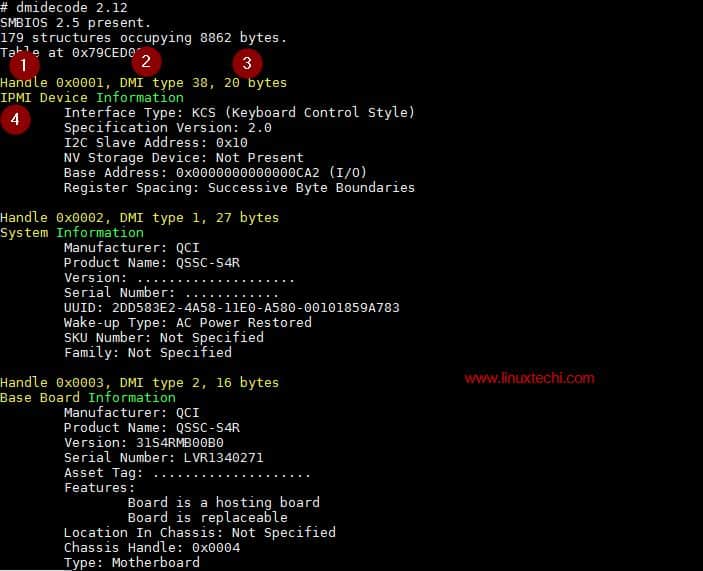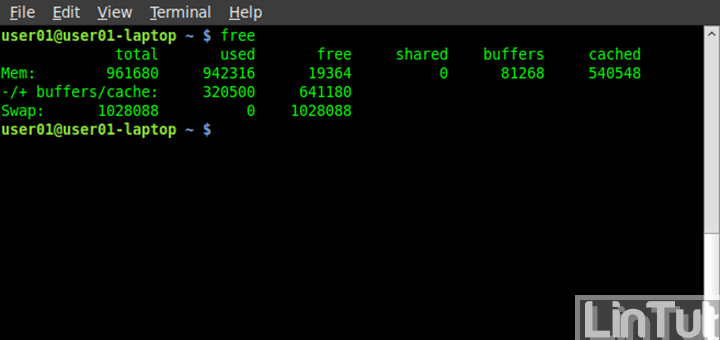Linux Command Memory Slots
- Linux Command Memory Slots Downloads
- Linux Command To Check Memory Slots
- Linux Command Memory Slots Windows 10
- Linux Command Memory Slots Upgrade
Here’s a useful way of finding out how many memory slots are occupied on the motherboard of a machine without removing the cover, as well as how much installed physical memory is supported.
15 Examples To Master Linux Command Line History; Top 10 Open Source Bug Tracking System; Vi and Vim Macro Tutorial: How To Record and Play; Mommy, I found it! - 15 Practical Linux Find Command Examples; 15 Awesome Gmail Tips and Tricks; 15 Awesome Google Search Tips and Tricks; RAID 0, RAID 1, RAID 5, RAID 10 Explained with Diagrams. Linux Command Check Memory Slots, poker marianela, ed kim poker, star casino buffet early bird. Linux line commands enable you to gather all possible details about your computer's memory. You can even determine whether you can add extra memory to the computer without opening up the box. To list each memory stick and its capacity, issue the dmidecode command: dmidecode -t memory grep -i size. On my laptop, command line probes say I have 4 slots (2 used, 2 empty), yet upon unscrewing I actually have 2 slots (perhaps I have 2 hidden slots elsewhere yet not visible removing bottom panel).
We can use the dmidecode command to reveal your systems DMI table, which contains details of the systems hardware.
There are a whole load of DMI types we can look at – a full table of those at the end of this article.
In this particular case, we are interested in memory – type 16 ‘Physical Memory Array’ will show us how much memory is supported and DMI type 17 will reveal details of currently installed memory.
So, first off:-
Linux Command Memory Slots Downloads
dmidecode -t 16
Maximum Capacity shows us the maximum amount of memory can be installed in the machine. Number of devices tells us how many slots there are on the motherboard – in this case, 8.
Now we can interrogotate DMI type 17 – ‘Memory Device’ to show us details of installed memory
dmidecode -t 17
Each module installed will be listed with the the information given above. If we just want to know how many modules are installed and what size they are, we only really need the Size: – so we use grep
dmidecode -t 17 grep Size
From this we can see that 8x 2048MB modules are installed – so all the slots on the motherboard are populated.
There is plenty of other useful information that can be retrieved using dmidecode, including
-t1 System
-t2 Base Board
-t3 Chassis
-t4 CPU

-t9 PCI slots
Full SMIBIOS Specification
1 System
2 Base Board
3 Chassis
4 Processor
5 Memory Controller
6 Memory Module
7 Cache
8 Port Connector
9 System Slots
10 On Board Devices
11 OEM Strings
12 System Configuration Options
13 BIOS Language
14 Group Associations
15 System Event Log
16 Physical Memory Array
17 Memory Device
18 32-bit Memory Error
19 Memory Array Mapped Address
20 Memory Device Mapped Address
21 Built-in Pointing Device
22 Portable Battery
23 System Reset
24 Hardware Security
25 System Power Controls
26 Voltage Probe
27 Cooling Device
28 Temperature Probe
29 Electrical Current Probe
30 Out-of-band Remote Access
31 Boot Integrity Services
32 System Boot
33 64-bit Memory Error
34 Management Device
35 Management Device Component
36 Management Device Threshold Data
37 Memory Channel
38 IPMI Device
39 Power Supply
40 Additional Information
41 Onboard Device
Finding RAM size details in Linux for a System admin is very easy task. We can use free command to check how much RAM is present in our system. But when you want to find how many RAM/Memory sa lots are present in your system is bit tricky one. One way to do open your system and check what sa lots are there and how much RAM. Instead of doing this as a Hardware engineer we can use a command to check which sa lot is having below details.
- How much RAM
- Speed of the RAM
- Maximum RAM supported by that machine
- RAM location etc.
As you are already aware of dmidecode command to get all the system hardware info. We will use the same command for getting our RAM details.
To Find RAM details like maximum RAM, location of RAM etc we can use -t option with dmidecode as shown below
dmidecode -t 16

Output:
# dmidecode 2.11
SMBIOS 2.7 present.
Handle 0x000F, DMI type 16, 23 bytes
Physical Memory Array
Location: System Board Or Motherboard
Use: System Memory
Error Correction Type: None
Maximum Capacity: 16 GB
Error Information Handle: No Error
Number Of Devices: 2
If you see the above output we can figure it out how much maximum RAM this machine support, number of RAM devices and location etc.

Linux Command To Check Memory Slots
To get actual RAM details such as how many sa lots, actual RAM present etc, use -t 17 option in dmidecode command
dmidecode -t 17
Output:
Linux Command Memory Slots Windows 10
# dmidecode 2.11
SMBIOS 2.7 present.
Handle 0x0010, DMI type 17, 34 bytes
Memory Device
Array Handle: 0x000F
Error Information Handle: 0x0011
Total Width: 64 bit’s
Data Width: 64 bit’s
Size: 4096 MB
Form Factor: SODIMM
Set: None
Locator: DIMM0
Bank Locator: BANK 0
Type: DDR3
Type Detail: Synchronous
Speed: 1333 MHz
Manufacturer: Kingston
Serial Number: 4B29A74B
Asset Tag: 0123456789
Part Number: 99U5428-046.A00LF
Rank: Unknown
Configured Clock Speed: 1333 MHz
Handle 0x0013, DMI type 17, 34 bytes
Memory Device
Array Handle: 0x000F
Error Information Handle: 0x0014
Total Width: 64 bit’s
Data Width: 64 bit’s
Size: 4096 MB
Form Factor: SODIMM
Set: None
Locator: DIMM1
Bank Locator: BANK 2
Type: DDR3
Type Detail: Synchronous
Speed: 1333 MHz
Manufacturer: Kingston
Serial Number: 4729BF4B
Asset Tag: 0123456789
Part Number: 99U5428-046.A00LF
Rank: Unknown
Configured Clock Speed: 1333 MHz
If we want to see complete RAM details we can use -t memory option to get the details. Note this is a combination of 16 and 17 options
dmidecode -t memory
Output:
# dmidecode 2.11
SMBIOS 2.7 present.
Handle 0x000F, DMI type 16, 23 bytes
Physical Memory Array
Location: System Board Or Motherboard
Use: System Memory
Error Correction Type: None
Maximum Capacity: 16 GB
Error Information Handle: No Error
Number Of Devices: 2
Handle 0x0010, DMI type 17, 34 bytes
Memory Device
Array Handle: 0x000F
Error Information Handle: 0x0011
Total Width: 64 bit’s
Data Width: 64 bit’s
Size: 4096 MB
Form Factor: SODIMM
Set: None
Locator: DIMM0
Bank Locator: BANK 0
Type: DDR3
Type Detail: Synchronous
Speed: 1333 MHz
Manufacturer: Kingston
Serial Number: 4B29A74B
Asset Tag: 0123456789
Part Number: 99U5428-046.A00LF
Rank: Unknown
Configured Clock Speed: 1333 MHz
Handle 0x0013, DMI type 17, 34 bytes
Memory Device
Array Handle: 0x000F
Error Information Handle: 0x0014
Total Width: 64 bit’s
Data Width: 64 bit’s
Size: 4096 MB
Form Factor: SODIMM
Set: None
Locator: DIMM1
Bank Locator: BANK 2
Type: DDR3
Type Detail: Synchronous
Speed: 1333 MHz
Manufacturer: Kingston
Serial Number: 4729BF4B
Asset Tag: 0123456789
Part Number: 99U5428-046.A00LF
Rank: Unknown
Configured Clock Speed: 1333 MHz
Some of the valid keywords/types you can use and find different details are as follows.
bios
system
baseboard
chassis
processor
memory
cache
connector
sa lot
We can even use lshw command to get RAM/Memory details as well Cache details such as L1, L2 and L3 levels.
lshw -class memory
*-firmware
description: BIOS
vendor: Hewlett-Packard
physical id: 0
version: F.22
date: 07/27/2011
size: 1MiB
capacity: 2496KiB
capabilities: pci upgrade shadowing cdboot bootselect edd int13floppynec int13floppytoshiba int13floppy360 int13floppy1200 int13floppy720 int13floppy2880 int9keyboard int10video acpi usb biosbootspecification uefi
*-memory
description: System Memory
physical id: f
sa lot: System board or motherboard
size: 8GiB
*-bank:0
description: SODIMM DDR3 Synchronous 1333 MHz (0.8 ns)
product: 99U5428-046.A00LF
vendor: Kingston
physical id: 0
serial: 4B29A74B
sa lot: DIMM0
size: 4GiB
width: 64 bit’s
clock: 1333MHz (0.8ns)
*-bank:1
description: SODIMM DDR3 Synchronous 1333 MHz (0.8 ns)
product: 99U5428-046.A00LF
vendor: Kingston
physical id: 1
serial: 4729BF4B
sa lot: DIMM1
size: 4GiB
width: 64 bit’s
clock: 1333MHz (0.8ns)
*-cache:0
description: L1 cache
physical id: 1c
sa lot: L1 Cache
size: 32KiB
capacity: 32KiB
capabilities: synchronous internal write-through instruction
*-cache:1
description: L2 cache
physical id: 1d
sa lot: L2 Cache
size: 256KiB
capacity: 256KiB
capabilities: synchronous internal write-through unified
*-cache:2
description: L3 cache
physical id: 1e
sa lot: L3 Cache
size: 3MiB
capacity: 3MiB
capabilities: synchronous internal write-through unified
*-cache
description: L1 cache
physical id: 1b
sa lot: L1 Cache
size: 32KiB
capacity: 32KiB
capabilities: synchronous internal write-through data
Do let us know if there is any way to find RAM sa lot details.
The following two tabs change content below.Linux Command Memory Slots Upgrade
- Docker: How to copy files to/from docker container - June 30, 2020
- Anisble: ERROR! unexpected parameter type in action:
Fix - June 29, 2020 - FREE: JOIN OUR DEVOPS TELEGRAM GROUPS - August 2, 2019
- Review: Whizlabs Practice Tests for AWS Certified Solutions Architect Professional (CSAP) - August 27, 2018
- How to use ohai/chef-shell to get node attributes - July 19, 2018